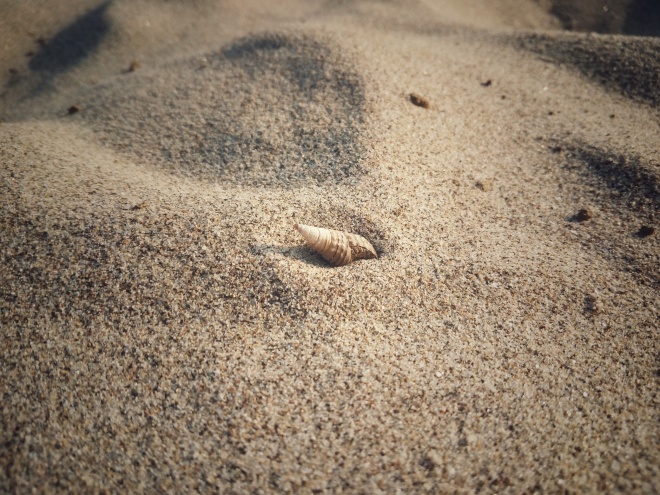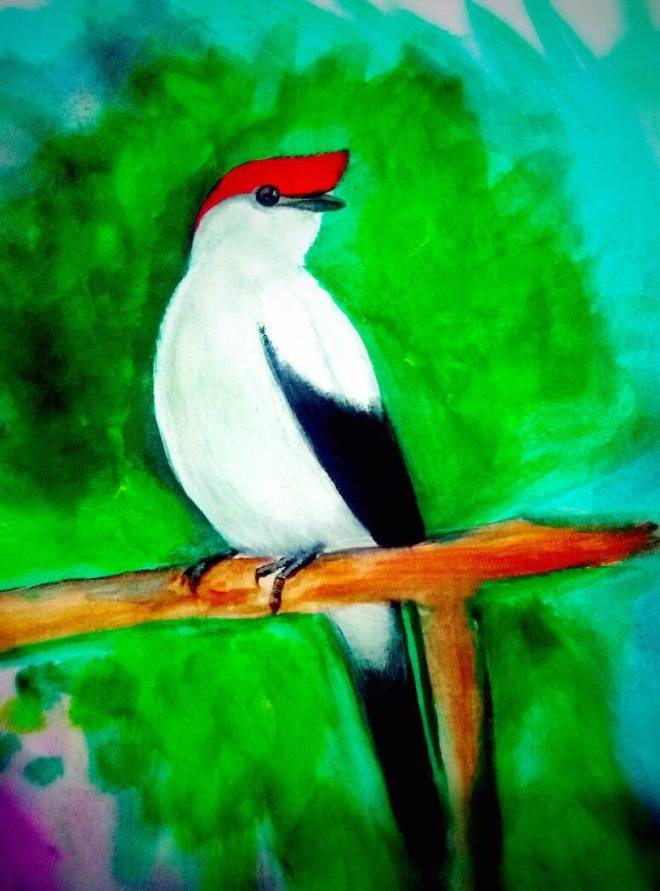
At the bank of Ganges, saw this shell, a reflection of life in past… Truly mesmerising shot for me atleast… Please leave comments and suggestions… Thanku…

At the bank of Ganges, saw this shell, a reflection of life in past… Truly mesmerising shot for me atleast… Please leave comments and suggestions… Thanku…
Came out of my class in a lot of frustations due to exams, and rain was ceased almost an hour ago… But few leaves of this tree were still holding Droplets…
Guessed I just reached in time to click this pic just before the moment the drop fell… One of the last drops of the rain, held by the tree for me… ♥♥♥
Here is a painting of a very beautiful but critically endangered bird – the Araripe manakin….
The Araripe manakin (Antilophia bokermanni) is a critically endangered bird from the family of manakins (Pipridae)
This species is endemic to the Chapada do Araripe (Araripe uplands) in the Brazilian state of Ceara in the north eastern region of the country.
In 2000 there was an estimated population of less than 50 individuals and it was considered as one of the rarest birds in Brazil and in the world. Only three males and one female were found until that date. In 2003 the estimations were more optimistic and BirdLife International assumed the population of 49 to 250 individuals. In 2004 it proceeded on the assumption that less than 250 individuals exist in the wild which was based on 43 discovered males.
Source- Wikipedia

The four-horned antelope (Tetracerus quadricornis), or chousingha, is a species of small antelope found in open forest in India and Nepal.
It is only member living in its genus Tetracerus, others being extinct…. It is smallest of Asian bovids. Males are unique among ammals in that they possess Four permanent Horns…. The species is listed vulnerable By IUCN ….
A very important animal to India…… very specific animal- it is only known mammal with four horns on its head…..


Nasikabatrachus sahyadrensis is a frog species belonging to the family Sooglossidae. It can be found in the Western Ghats in India. Names in English that have been used for this species are purple frog, Indian purple frog or pignose frog. Although the adult frog was formally described in October 2003, the taxon was recognized much earlier by its tadpole, which had been described in 1918. With its closest relatives in the Seychelles, Nasikabatrachus is thought to have evolved separately for millions of years. Its discovery also adds to the evidence that madagascar and the Seychelles separated from the Indian landmass sometime well after the breakup of Gondwana had started…..
The species was described from specimens collected in the Idukki district of Kerala in 2003, However, it was already well known to the local people and several earlier documented specimens and publications had been ignored by the authors in the 2003 paper that describes the genus and species….
The species is now known to be quite widely distributed in the Western Ghats, ranging from the Camel’s Hump Hills Range in the north, all the way to the northernmost portions of the Agasthyamalai Hill Range in the south….
The frog spends most of the year underground, surfacing only for about two weeks, during the monsoon, for purposes of mating. The frog’s reclusive lifestyle is what caused the adults to escape earlier notice by biologists, and hence delay its scientific description. The breeding season is during the pre-monsoon rains, primarily in May. The males call from burrows beside headwater streams and when approached by females, mount them in amplexus. While in amplexus in the pectoral position, the male tightly holds the vertebral column of the female. The pair then enters a crevice in a rock pool amid a flowing stream and lay their eggs inside. More than 3000 eggs are laid as part of a clutch. The tadpoles metamorphose after around 100 days
Unlike many other burrowing species of frogs that emerge and feed above the ground, this species has been found to forage underground, feeding mainly on termites using their tongue and a special buccal groove….
WITH THANKS TO WIKIPEDIA…..AND GOOGLE………. 😉